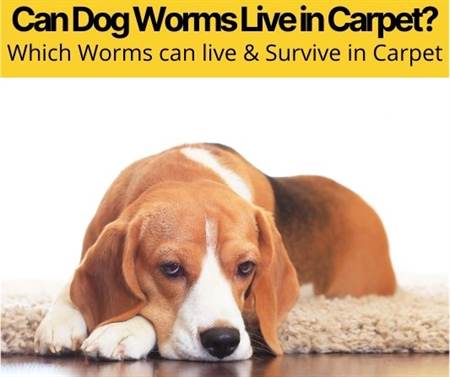 Cream-colored with brown heads, six short legs, and curled up into their signature C-shape, grub worms dwell below the grass in lawns throughout the United States.
Cream-colored with brown heads, six short legs, and curled up into their signature C-shape, grub worms dwell below the grass in lawns throughout the United States.
So what are these peculiar-looking insects? Is their whole life’s destiny to live below our grass and much on roots?
Or do they turn into something a bit more interesting? Let’s find out what the different Grub worms actually turn into.
What Do Grub Worms (Grubs) Turn Into?
All grub worms turn into some kind of scarab beetle. Eight different kinds of scarab beetles are common in yards throughout the United States: Japanese beetles, Asiatic garden beetles, June bugs, green June beetles, oriental beetles, northern and southern masked chafers, European chafers, and black turfgrass ataenius. Fortunately for them, these rather ugly-looking worms are certainly much more handsome when they enter adulthood.
What is a Grub Worm?
Grub worms actually aren’t real worms; they are larvae. That means they are in the in-between stage before becoming an adult beetle. They begin as an egg laid by a female beetle in the soil. Once the egg hatches, the larva (plural: larvae) emerges as a grub worm. The grub worm stage lasts anywhere from a few months to a few years. The grub worm then becomes a pupa (plural: pupae), and finally an adult beetle. Grub worms go by many names, including lawn grubs, white grubs, turf grubs, or even just plain “grubs.”

Types of Beetles Grub Worms Turn Into
Do Grub Worms Turn into June Bugs?
Yes, some Grub Worms Turn into June Bugs, they are also called May beetles or June beetles, and can be found mainly in the eastern United States. The adult beetles feed on flowers and foliage, sometimes causing damage. The larvae, sometimes called true white grubs, live in the soil for about three years and tend to be more destructive than their adult forms.
Often attracted to light, these beetles appear during the spring evenings. June bugs can be identified by their brown bodies and shiny brown wings and range from one half to one inch long.
More to Read: How to Eat Worms
Green June beetle
Although they share a similar common name, these beetles are from a different subfamily than June bugs. The green June beetle can be found across the eastern United States and as far west as Texas. These beetles can cause damage to plants in their adult form as well as in the grub form, though not as much as other members of the scarab family.
As their name suggests, the green June beetle is green with yellow and brown on its sides and lower wing area. The larval stage grub worms are a bit unusual because they often crawl to the top of the soil during the night unlike most other grub worms that stay in the ground. Also, this grub worm, instead of using its six feet to crawl, moves on its back.
Japanese Beetles
These beetles were accidentally imported to the United States from Japan and have since spread across eastern United States and into some southern and western states. According to the United States Department of Agriculture, the Japanese beetle is now the most wide-spread of the turf pests in the United States. They may cause considerable damage to your lawn in their larval stage as a grub worm as well as an adult. Various methods of controlling the spread of these beetles have been attempted including beetle-eating wasps and disease from bacteria.
You can identify these beautiful pests by their bright green head and body and brown wing covers. They also have five white spots in each side of their bodies and are around a half-inch long.
Asiatic Garden Beetle
These scarab beetles are found mostly in eastern United States. Like its Japanese cousin, the Asiatic beetle was accidentally brought from Asia in the early 1900s and has flourished in North America. Also similar to Japanese beetles, they can cause damage as both grubs and adults. Unlike Japanese beetles, the adult beetles are more active at night and are attracted to light.
You can identify the adult Asiatic garden beetle by its brown wings and body which have been described as chestnut or cinnamon brown. They may also come in black. They are quite small, at just less than half an inch long.
Oriental Beetles
As their name suggests, the oriental beetles are yet another beetle accidentally brought in from Asia to North America. Even though these beetles are quite loud and noisy, they are not nearly as much of a pest as an adult and won’t do much damage to your yard. Unfortunately, the white grubs they come from do cause damage and can turn your yard into an ugly, patchy brown mess.
Oriental beetles are about a half-inch long and range in color from brown to black to a mixture of both. They can be found along the East Coast from New England down to North Carolina.
Northern and Southern Masked Chafers
These two kinds of beetles are located in the north and south of the United States respectively. The adults don’t cause any problems since they don’t eat during their short lifetime. Their larvae, or grub worms, sometimes called annual white grubs, do cause a lot of damage.
Chafers are less than and inch long, have brown wings and bodies and dark brown heads. The southern is a bit larger and has a richer color while the northern ones have visible hairs along the bottom of their abdomens.
European Chafer
Unlike Northern and Southern masked chafers, these beetles are not indiginous to the United States, but came from Europe. Since then, they have comfortably settled into the north eastern part of the United States. Like other masked chafers, the adults are quite short lived—only one to two weeks—and do not feed and therefore cause no damage. The grubs are a different story and may even cause more damage than Japanese beetles.
You can identify adult European chafers by their light brown wings and bodies. They may look similar to June bugs but are a lighter brown and smaller at only around a half an inch long.
Black Turfgrass Ataenius
Although these critters don’t often damage home lawns, they often cause damage to golf courses. They can be found in most of the United States, especially eastern United States as well as on the west coast.
Contrary to other beetles in this family, these shiny black beetles are quite small—usually less than a fourth of an inch long. Another difference between them and their scarab relatives previously discussed is that the worms pupate in the fall. The adults then spend the colder months borrowing under soil, leaves, or other decaying foliage until they emerge in spring to mate and begin the process over again. A second generation of adult beetles might emerge mid or late summer as well.
What Does a Grub Worm Look Like?
Grub worms are C-shaped and cream-colored with six legs in the front of the body and an orange-brown colored head.
Since grub worms look so similar, one of the best ways to distinguish between them is to examine the raster pattern on the last section of their body. You’ll need a strong magnifying glass and a guide to study the distinguishing patterns.
Another creature often mistaken for grub worms are the larvae of billbugs. These grubs are also cream-colored and C-shape, but lack legs. They are also only about a half inch in size when fully grown. These larvae can also cause similar damage to lawns if in great enough numbers.
How Big Do Grub Worms Get?
Most of them can measure up to one inch when fully grown, but the size does vary according to the species. The black turfgrass ataenius grub worm is only a fourth of an inch in length. The Asiatic garden beetle grub worm is also smaller at just around a half-inch when fully developed. On the other hand, a green June bug grub worm can grow up to two inches.
Where Do Grubs Come From?
Grubs hatch from the eggs the adult female beetles usually lay in the soil around the end of spring to mid-summer. After the grub worms hatch, they begin to feed until fall when they burrow deep into the soil for winter. In spring, they emerge again to feed on the surface of the soil until they change into pupae and then emerge as adults.
What Do Giant Lawn Grub Worms Turn Into?
The largest of the lawn grubs turn into June bugs. Of course, other beetles come from similar looking large larvae but that don’t feed on lawns. One of the largest of these comes from the eastern Hercules beetle. These grubs can grow up to three inches long. Contrary to the sometimes harmful lawn grubs, these larvae are helpful in breaking down decaying wood.
What Do Grub Worms Eat?
Most grub worms feed on the roots of our lawn grass and can cause damage by doing so. The black turfgrass ataenius is slightly different in that it prefers the grass that is typically planted on golf courses.
Are Grub Worms Bad?
Since many kinds of grub worms eat the roots of grass, they can eventually damage your lawn. With fewer roots to soak up water, grass can wither more easily in the hot summer sun. The first sign of grub worms eating your yard is your grass changing color and appearing brown, yellor, or gray. The grass will then quickly wilt in hot weather and can be easily lifted from the soil, rolling up like a carpet.
Another indirect method of damage to your yard comes in the form of predators of grub worms. Animals such as raccoons, crows, skunks, and foxes may dig in your yard to find these tasty sources of protein.
What Are Grub Worms Good For?
Although a lot of grub worms are considered pests, they are food for many animals and can also be used as fishing bait. The grubs of certain beetles not in the scarab family are very helpful in breaking down compost and dead plant material.
How Do You Treat & Get rid of Grub Worms?
Grub worms can be treated with insecticides specific for grub worms. Always make sure to carefully read and follow all the directions on the insecticide and dispose of any leftovers in a responsible manner. After applying insecticide, be sure to carefully water the area and continue to do so every few days to insure the insecticide soaks down into the soil where the grub worms live.
Related: Can febreze kill Bugs
Determine if You Need to Treat Grub Worms
Actually, even before you treat grub worms, you will need to first determine whether or not you have a grub worm problem. Our yards can certainly withstand a few grub worms without having to turn to insecticide. However, if you had problems with grub worms last year, there’s a good chance you’ll have issues again. If you’re not sure, you can test several areas throughout your lawn to see how many grub worms there are per square foot.
To test for grub worms, cut a square foot piece of grass about two to four inches deep and remove it. Poke around in the soil to see if you can find any grub worms. The threshold for how many grub worms your yard can stand may vary according to the species of the grubs. The black turfgrass ataenius are only harmful when they reach about fifty grubs per square foot. For June beetles, even three to five can be harmful. A good estimate is to treat grub worms if you have around ten per square foot.
Once you’ve counted the number of grubs, put the grass section back in place and make sure to water it. You’ll need to sample several sections throughout your yard to determine if grubs are a problem. Often, grubs will be found in just one area and so you’ll only need to treat that area.
What Is the Best Time to Treat for Grub Worms?
Typically, the best time to treat for most grubs is around the first week of August. This is when most of the grubs have already hatched, but are still small and are still feeding near the top of the soil. This timing applies for curative insecticides that directly kill the grubs and are effective for several weeks. There are some insecticides that work as preventative treatments. For these, you’ll need to use them earlier as they take longer to work. Read the directions carefully to determine which pesticide will work best for the time of year you want to treat.
By now, you know that grub worms are a peculiar-looking larvae that turn into much more handsome adult scarab beetles. Although the young larvae look almost identical to one another, the adults are much easier to tell apart. These grubs have been known to cause damage to lawns by eating the roots of our grass. Fortunately, a healthy yard can usually stand a few grub worms, but if they become too much, treatment is readily available in the form of insecticides.
Working with your neighbors will be helpful to ensure beetles do not just flee to a nearby inviting lawn only to return in a later year.
Repairing the Damage from Grub Worms
If your lawn has already experienced some damage from grub worms, you can still do some things to help it recover. Thorough watering will help your grass recover as will nitrogen fertilizer done in the fall.
Insecticide Treatment for Grub Worms
For this method, you’ll need to make sure the insecticide is able to soak down into the soil where the grub worms live. To do this, after you apply the insecticide, you’ll need to water the area well and continue watering it every four days or so. There are several types of insecticides available for grub worms. Always make sure to read instructions carefully.
It may be necessary to treat again for grub worms if you find that the insecticide has been ineffective. To do so, examine again several sections of soil and determine the number of grubs you find. Based on that number, you can decide if you need to treat again.






